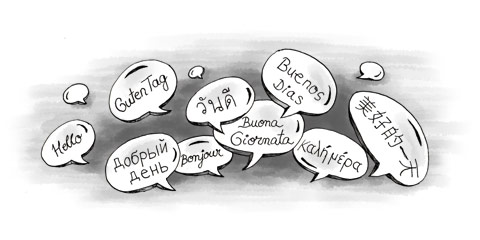Some 95 percent of the Chinese population speaks Chinese, as opposed to the non-Chinese languages such as Tibetan, Mongolian, Lolo, Miao, and Tai. The majority of the Chinese-speaking population live in China (over 980 million), Hong Kong, and Taiwan (19 million), but there are also substantial Chinese-spoken populations throughout the whole of South-east Asia, especially in Singapore, Indonesia, Malaysia, and Thailand. Chinese-speaking communities are also found in many other parts of the world, i.e. in Europe, North and South America, and the Hawaiian Islands.
Chinese languages and dialects
Spoken Chinese comprises many regional variants, generally referred to as dialects, although some dialects are often referred to as proper languages:
The Mandarin language group forms the largest group spoken in China and consists of a wide range of dialects in the northern, central, and western regions.
The Cantonese dialects are spoken in Hong Kong, Guangdong, Southern Guangxi Zhuang Autonomous Region, parts of Hainan, Macau, and in many overseas settlements.
The Hakka (Kejia) languages are spoken in Guangdong, Southwestern Fujian, Jiangxi, Hunan, Yunnan, Guangxi, Guizhou, Sichuan, Hainan, Taiwan, Singapore, Malaysia, Indonesia, many overseas Chinese communities, and in pockets throughout Southeast Asia.
Most of the inhabitants of the south central region, in Hunan use the Xiang dialects, also known as Hunanese.
The Min dialects are spoken in most of Fujian, large areas of Taiwan and Hainan, parts of Eastern Guangdong and the Leizhou Bandao Peninsula, and in areas of Southeast Asia.
Most of the people living in Jiangxi, eastern part of Hunan, and the southeastern corner of Hubei use the Gan dialects.
The majority of the inhabitants of Zhejiang, as well as people living in southern areas of Jiangsu and Anhui, speak the Wu dialects.
The Wu dialects share marginal mutual intelligibility with the Mandarin and Gan dialects.
The national language
In 1913, the Ministry of Education convened a Commission on the Unification of Pronunciation to establish a standard national tongue. Due to the domination of the numerically superior Mandarin-speaking delegates, the Peking dialect was voted for the general foundation of the new national language guoyu (national speech). It embodies the pronunciation of Peking, the grammar of the Mandarin dialects, and the vocabulary of modern vernacular Chinese literature, but features of various local dialects were also incorporated.
Guoyu is now the official language of mainland China, Taiwan and one of the official languages of Singapore. After the establishment of the People's Republic of China in 1949 it was renamed to putonghua (common language). In 1956, it became the medium of instruction in all schools nationwide and a policy of promoting its use began. It is now the most widely used form of spoken Chinese.
Written Chinese
Written Chinese is understood by those who speak Mandarin, Cantonese or any other Chinese dialects, with many of the characters also being used in Korea, Japan, and Vietnam. There are about 3.500 simple Chinese characters, which can be combined to form at least another 10.000 more complex characters.
Today, Chinese characters are mostly written from the top left moving horizontally to the right, just as in English. However, sometimes characters are still written vertically from the top to the bottom, and even horizontally from the right to the left.
Phonetic spelling (Pinyin)
You can’t guess the pronunciation of a Chinese word by looking at Chinese characters. To help foreigners learn Chinese, a phonetic spelling system called pinyin was developed. Many street signs and products are labelled not only with Chinese characters, but also in Pinyin.
Typing Chinese
Foreigners often wonder how the Chinese are able to insert their thousands of characters into a computer without using a type pad the size of a football field. To handle Chinese characters, you need a software program like NJ Star, which allows you to type the pinyin pronunciation of a word and then transfers it automatically to Chinese characters. For a variety of Chinese language tools, have a look at www.mandarintools.com.


